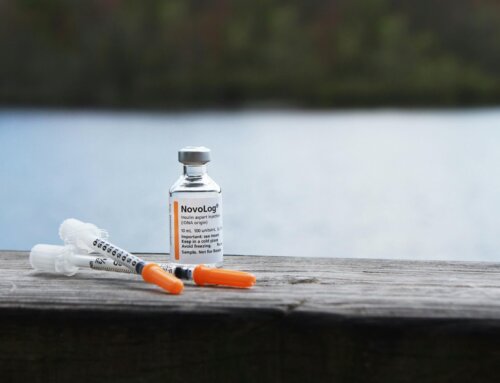Knowing what to do to manage your diabetes is crucial to your future health. Understanding the difference between true and false information about diabetes can help you achieve better blood sugar control. Look for accurate information from reliable sources. There is so much information online or learned from our friends and family about diabetes that may be incorrect. This can hurt and delay your progress. If you still have doubts about the information you obtain, always check with your health care provider. They will be direct, accurate and honest with their answers. Always continue to ask questions if you remain unsure.
The International Diabetes Federation (IDF) finds a worldwide increase in diabetes “confirming it as a significant global challenge to the health and well-being of individuals, families and societies.” There are currently 537 million people living with diabetes around the world, which translates to 1 out of every 10 people worldwide. The rate is predicted to rise to 643 million people with diabetes by 2030. Diabetes was responsible for 6.7 million deaths worldwide in 2021. According to the World Health Organization (WHO) diabetes has entered into the top 10 leading causes of death worldwide. There were 51 million cases of diabetes in the US in 2021 and 1 in 4 living with diabetes in the US is undiagnosed. Diabetes cost 966 billion dollars in health care expenses in the US alone in 2021. Diabetes is the 7th most common cause of death in the US. A diabetes diagnosis doubles your risk of cardiovascular disease and increases your chance of a stroke by one and a half times. The risk of nerve damage, kidney damage or kidney failure as well as blindness and amputation raises way up. Unfortunately, diabetes is not going away anytime soon.
Let’s look at some frequently asked diabetes questions which may have tricky answers:
1. True or False? The official blood sugar reading recommendation for people with diabetes (fasting) is 80-130mg/dl (or under 180 mg/dl 1-2 hours after eating), with an A1C of 7% or less is considered “being in good Diabetes Control”
Answer: Mostly true
Although the recommendation falls in this range for most people with diabetes, both the fasting and target A1C have become more individualized depending on your personal situation. Fasting means “not eating or drinking anything except for water for at least 8 hours”. The A1C represents the “3-month average glucose level”, which remains an important indicator of overall diabetes control. You can eat when you are having an A1C blood test. By giving you individualized numbers because of a certain situation, your health care provider will be able to maximize your diabetes care while minimizing your risk of any problems. They want to get you “to target” (meaning a good blood sugar range) in a safe and effective manner. Some possible reasons why your doctor would consider individualization of blood sugar numbers and goals are:
- How long you have had diabetes – 10 or more years would warrant more flexible and achievable guidelines.
- Your specific age – someone who is 40 years old may need tighter control than someone who is 80 years old. The overall general health will be looked at.
- Your mental status – do you have dementia, any memory loss or Alzheimer’s?
- Your present life expectancy based on other health concerns.
- You have hypoglycemic unawareness – no ability to feel or recognize your low blood sugars.
- History of any cardiovascular disease or history of a stroke. History of cardiac surgery.
- If you are on insulin and how much insulin you take.
- If you are pregnant.
- Children, adolescence and teenagers.
- If you have existing diabetes related complications of nerve damage, eye problems or blindness, kidney issues (failure, dialysis or amputations).
Since there is no such thing as a specific “diabetes diet”, physicians are also working on giving patients individualized eating plans, usually with help from a registered dietitian or nutritionist. The new theory is to recommend an eating plan “based on a person’s genetics, microbiome, lifestyle, age and physical activity”. This can enhance your diabetes control and general health. As with treatment of cancer, more and more diabetes care will become ‘individualized’ in the near future. By talking to your doctor and understanding where your numbers should be, specifically based on you and your needs may help prevent both immediate and future complications.
2. True or False? You can and you should eat Carbohydrates at each meal and snack when you have Diabetes
Answer: True
This is asked frequently by people with diabetes since there is so much misinformation being discussed online and with your peers. A common misconception among people with diabetes is “to avoid all carbohydrate foods which will mess up blood sugars”. The proper answer really is “eating the right type of healthy complex carbohydrates at appropriate times and broken into proper portion size, depending upon your needs”.
It really depends on your current height and weight, activity level, glucose management and diabetes medications. It also depends on your food budget and personal preference of foods. Ethnicity may play a part in carbohydrate choices. The wording should not be about “good vs. bad carbs” but it should concern “whole vs. refined carbs”. Carbohydrates are part of a healthy, balanced diet. The dietary guidelines recommend eating 45-65% of calories from carbohydrates. Anything less than 45% carbs is considered low carbohydrate.
Restrictive diets are usually difficult to maintain. Carbs are counted in grams. The average American eats more than 300 grams of carbohydrate daily. This is way too much for someone with diabetes. The guidelines state generally “you should be eating 130 grams of healthy carbs a day with diabetes”. Again, there is no ideal amount for every single person with diabetes since all carbs do not have the same effect on blood sugars.
By following this guideline, you may manage your diabetes better. Carbohydrates are the preferred source of energy for both our bodies and brains. High quality carbohydrates found in fruits, vegetables, dairy, beans, grains and legumes provide the body with the energy it needs. Without carbohydrates your body will miss certain vitamins, minerals and fiber.
Simple Carbohydrates
Your body digests simple carbohydrates rather quickly spiking your blood sugar and possibly to extremely high numbers. They do not stay with you for long and you become hungry quickly after eating them. Most simple carbs in the US diet are added to other foods. They are processed and refined. These include:
- Foods with 1-2 sugars and added sugars: soda, pastries, honey, corn and other syrups, cakes, cookies, pies, candy. They contain no fiber, vitamins or nutrients.
- Simple carbs are found naturally in milk, fruit and some vegetables. These are better quality than processed simple carbs.
Complex Carbohydrates
Complex carbohydrates include starches and fiber. Starches take longer to break down which means blood sugars do not spike and fiber is not digested. This helps keep blood sugars better controlled. You will stay satiated longer eating complex carbs. They contain vitamins, minerals, other nutrients and fiber. Complex carbs contain 3 or more sugars.
- The total amount of complex carbohydrates and timing should be individualized. The total number and source of carb is key when you have diabetes.
- Fiber is found in fruits and starchy and non-starchy vegetables, legumes and whole grains.
- Carbohydrates are not all the same. High fiber carbs keep you full longer. Examples would be quinoa, buckwheat, wild rice, oats, farro, pumpkin, winter squash, broccoli, and barley. Starchy carbs are potatoes, lentils, kidney beans, peas, corn, whole grains, seeds, nuts and legumes.
- Fiber should be eaten at 28-34 grams per day and broken down between meals and snacks. Adding too much fiber at once can cause gastric distress. Add slowly and drink extra water.
- Eat fruits with the skin. Those especially high in fiber are kiwis, apples, pears, peaches, grapes, cherries, nectarines and plums. Eat vegetables with the skin such as eggplant, sweet potatoes, Idaho potatoes and cucumbers.
- Fiber not only helps with blood sugars, but it helps lower cholesterol levels and contributes to a healthy gut.
- The typical range of carbohydrates per meal with diabetes varies from 15-60 grams depending on the individual. Snacks usually contain 15-30 grams of carbs. Most people with diabetes will benefit from nutritional counseling.
- By checking blood sugars prior to your meal, and then 2 hours after your meal, can give you information about how your body is handling those carbs.
- If counting carbs is not your thing then choose the plate method with half your plate filled with vegetables, raw or cooked, ¼ is a protein and ¼ is a carb. This makes meal planning simple.
- You can lower your blood sugars by walking 30 minutes after a meal, for 15-30 minutes.
- Learn to read food labels. Check serving sizes and total carbohydrates. Look for and reduce or eliminate foods with added sugars. Plan ahead so you do not overeat carbs at one sitting. Space out your carb foods.
- Treats can be eaten occasionally in small amounts. That is why they are called a treat.
- Do not fear carbohydrate foods but learn about them and make them part of your eating plan.
3. True or False? Medicare (an insurance program for seniors) covers certain Diabetes Screenings, Services and Supplies
Answer: True for certain diabetes screenings, services and supplies. A deductible or payment out of pocket may be present.
There are more than 14 million Americans over 65 who have diabetes. The Medicare number is 800-633-4227 or you can check online for your full benefits. You will need a prescription from your health care provider for the supply, service or medication you are allowed from Medicare.
Remember, after your initial deductible, Medicare only pays 80% of the entire cost. You are responsible to either pay the remaining 20% or enroll in a Medigap or supplemental plan. You can also join a Medicare C or Medicare Advantage plan which may provide different services, screenings and supplies at different costs. The original Medicare plan is comprised of several parts including part A, part B and part D.
Medicare part A is the hospital insurance which you automatically get if you qualify. It covers inpatient hospital stays, lab tests, hospice, surgery, home health care and skilled nursing facility.
Medicare part B covers doctors, other health care providers, certain services and out-patient care. Part B covers a yearly eye exam checking for diabetic retinopathy, glaucoma, macular degeneration and cataract surgery. Eye issues are more common with diabetes and should be checked and monitored. Part B covers a well-care foot exam, treatment for corns, calluses and ulcers as well as toenail management. If your podiatrist writes a prescription, you are also entitled to a pair of diabetes shoes and insoles.
Part B covers diabetes screenings to check your blood glucose. It also covers Diabetes Self-Management Training (DSMT) for an initial 10 hour session upon diagnosis split up as 1 hour for an individual assessment and 9 hours of a group session. This will cover coping skills as well as diabetes management and basic nutritional skills. You will need a written order from your health care provider for this service. In areas where group classes are unavailable you may be able to do a Telehealth or an additional individual session. You are then entitled to 2 hours of DSMT each calendar year after the initial class.
Part B also covers Medical Nutritional Therapy (MNT) with a registered dietitian. You will need a physician’s written order. You will have an initial nutritional assessment (individual or group) with scheduled follow up visits. Part B also covers some Durable Medical Equipment (DME). Part B covers a glucose meter and test strips depending upon how often your physician wants you to test as well as a lancet device, and lancets. You will also receive testing solution.
Medicare Part D is where your medications including insulin are covered at 80%. The other 20% comes from you or a Medigap plan. Part D also covers insulin pens, needles, syringes, alcohol swabs and gauze as well as certain insulin pumps. In January 2023, a new rule pertaining to certain insulins covered by Medicare was initiated. The cost of a Medicare-approved insulin will max out at $35.00 for a month’s supply. Even if you receive a 60-90 day allowance of insulin you will only pay $35.00 maximum per month. This is excellent news for people who have been paying huge amounts of money for their insulin.
There will be similar caps on the price for insulin used in traditional insulin pumps. A fee for Part D is deducted from your social security monthly payment. Most people require a drug plan in addition to their Medicare Part D which covers a percentage of your medications. Some common drug plans are United Healthcare, Humana, Silver Scripts and WellCare. The Part D deductible in 2023 will be $505.00. Medicare Part D also covers a percentage of your oral diabetes medications.
Make sure any supplier you use accepts Medicare to avoid over payment. Make sure to reorder your medications and supplies automatically so you do not run out. New prescriptions are required by Medicare each year since your medication needs may change. Keep glucose tablets and a carbohydrate snack available at all times if you take insulin or for when your blood sugar drops. Do not miss your scheduled medical appointments to stay on track with your diabetes care. There are professionals who offer information on Medicare and other health insurance plans. Check with them if you have any other questions.
4. True or False? You can always recognize pre-diabetes and type 2 diabetes because of all the symptoms
Answer: False
There are many people with diabetes who have no symptoms when their blood sugars go up or down. Type 2 diabetes is often a silent disease. You may feel perfectly fine. Also, people with pre-diabetes rarely have symptoms and even those people who develop type 2 may not have symptoms at the beginning, or ever. According to endocrineweb.com, “27% of all people with type 2 diabetes do not even know they have it”. Some studies state almost “50% of people with type 2 diabetes are not aware they have it”. More than 84% of people with pre-diabetes do not know they have this condition. Your diabetes numbers are affected by food intake, medications, stress, illness and exercise.
What are the Symptoms of Low Blood Sugar?
- Dizziness
- Blurry vision
- Anxiety/nervousness
- Muscle weakness
- Sweating
- Hunger
- Tingling lips/pins and needles
- Nausea and vomiting
- Headaches/slurred speech
- Poor concentration/confusion
- Rapid heartbeat
- Coma if not treated
People usually start feeling low symptoms when blood sugar reaches 70mg/dl. Seizures and coma can occur when lower blood sugars are not treated and reach 49mg/dl. A hypoglycemic coma means you are still alive but unresponsive. Studies show “the average person with type 1 diabetes experiences low blood sugar at least 2 times a week without realizing it”. Generally, this only happens to people with type 1 diabetes or people with type 2 diabetes who take insulin.
“Hypoglycemic unawareness is a condition where there are no normal warning signs or symptoms of low blood sugar which may result in a coma”. With hypoglycemic unawareness it is best to wear a Medical Alert ID, always carry a fast-acting glucose source, have someone know how and when to give you glucagon-nasal spray or injection and consider getting a “diabetes alert dog”. If you do not respond to fast acting glucose, glucose tablets, regular soda or glucose gel, call 911.
The best way of preventing an unrecognized low blood sugar is to test your blood glucose frequently by either pricking your finger for a drop of blood or wearing a continuous glucose monitor (CGM). These devices use a sensor that measures the level of sugar in your interstitial fluid, continuously. The first CGM was approved in 1999. Many advances have been made since then. Recently, flash glucose meters have joined the market. Flash meters involve putting a sensor patch on your skin thru a small cannula and wearing it for up to 2 weeks. You just touch it with your phone and can get an instant reading.
In time, there will be new non-invasive methods of monitoring your blood sugars. Many interesting ways to monitor are currently being developed including testing glucose on the surface of your eye, ear lobe or on a skin patch.
Possible reasons for going too low are taking too much insulin, not eating enough carbohydrates or exercising too much. You can even have non-diabetic hypoglycemia, (no diabetes) but it is a very rare condition.
What are the symptoms of High Blood Sugar?
- Increased hunger, thirst and urination
- Weakness or fatigue
- Unexplained weight loss or weight gain
- Blurry vision
- Slow healing wounds
- Numbness or tingling
- Headaches
- Itching/frequent infections
What are the symptoms of Extremely High Blood Sugars?
- Abdominal pain
- Fruity smelling breath
- Nausea and vomiting
- Dry mouth
- Shortness of breath
- Loss of consciousness, coma
Sometimes, if you do experience symptoms, it may be difficult to tell if you are having high or low blood sugars since the symptoms may mimic each other. Causes of high blood sugar may be: eating too much food, eating too many carbohydrates, illness, infection, stress or too little exercise.
Severe hyperglycemia can cause serious health problems that may require emergency care. It may result in a diabetic coma. Not feeling high blood sugars over time can result in complications to your eyes, kidneys, nerves and heart. High blood sugars are rarely felt below 200mg/dl and may not be felt at all. For this reason, again, it is best to know what your blood sugars are doing by testing them often. In the long run, this may prevent many of the complications of diabetes.
5. True or False? Eating Too Much Sugar causes both Type 1 and Type 2 diabetes
Answer: False
Eating too much sugar does not cause either type 1 or type 2 diabetes. Several large studies have shown that “people who frequently consume beverages like regular soda, have a significantly higher risk of developing type 2 diabetes”. More than 286,000 people were studied and it was found that a large consumption of beverages with added sugar were associated with a “30% higher risk of developing type 2 diabetes”. Why does that happen?
Putting on excess weight from eating/drinking too many calories from sugar can cause insulin resistance. Insulin resistance is “when the body’s cells cannot use insulin properly and continues to make more and more insulin to overcome the increased level in blood sugars”. In time, the body loses its ability to make any insulin or enough insulin and type 2 diabetes occurs.
Type 1
Type 1 is a completely different disease process – but eating too much sugar does not cause this either. Type 1 diabetes is “when your body no longer produces any insulin”. The beta cells in your pancreas are destroyed; type 1 is caused by genetics, autoimmune issues, an environmental trigger such as a virus or other still unknown factors. An autoimmune reaction is “when the body attacks itself by mistake”. This process can occur over weeks or months before type 1 actually develops. Although seen more frequently in children, adolescents and teenagers, Type 1 diabetes can occur at any age. There is no prevention for Type 1 at this time.
Type 2
There are other risk factors for developing type 2 diabetes besides weight gain. Many people who are not overweight eventually develop diabetes, and not everyone who is overweight develops diabetes. Other risk factors for type 2 include family history, age (over 45), ethnicity (e.g., Hispanic, American Indian, Alaska natives, Pacific Islanders, Asian Americans and African Americans). Other type 2 risks include having high blood pressure, a history of polycystic ovarian syndrome (PCOs), delivering a baby over 9lbs or having gestational diabetes, and lifestyle factors including inactivity. The more risk factors you have, the higher your diabetes risk becomes. Type 2 diabetes can develop over many years.
Remember!
Everyone responds differently to food. One person may spike after eating a certain food while another could just have a moderate blood sugar elevation. This is when eating the same variety and amount of food. You will know by testing your blood sugar 2 hours after your meal.
- There are natural sugars in fruits, vegetables and dairy. The “problem sugars” are added and hidden sugars in syrups, sauces, condiments, dressings, fruit juice, regular soda, desserts and pre-packaged snacks and meals.
- Learn to read food labels and be very aware of portion size servings.
- Eat more whole foods. The fewer the ingredients, the better.
- Learn to limit or avoid processed meats, processed and packaged snacks and baked goods, white foods which contain no fiber or nutritional value. Limit or avoid pre-sweetened cereals, fried foods, store made smoothies. Limit or avoid heavily marbleized meats and foods with trans-fats or saturated fats. Limit or avoid alcohol.
- Avoid gaining weight as you age. Try to lose at least 10 pounds if you are overweight. Talk to your physician if you are considered obese – they may have suggestions on how to manage weight loss more efficiently and effectively.
Along with stress reduction and moderate/routine exercise, this may help you avoid type 2 diabetes. If you already have it, these tips may help you keep your blood sugars better controlled and avoid future complications.
Know the real answers to questions you have frequently asked. Keep asking.
References
- https://www.diabetesselfmanagement.com/managing-diabetes/blood-glucosemanagement/blood-sugar-chart/
- https://www.diabetesselfmanagement.com/diabetes-resources/definitions/hypoglycemia-unawareness/
- https://www.ncbi.nlm.nih.gov/pmc/articles/PMC3632160/
- https://www.eatingwell.com/article/8009214/can-you-eat-carbs-when-you-have-diabetes/
- https://www.webmd.com/diabetes/diabetes-how-count-carbs
- https://www.eatingwell.com/article/290645/healthy-carbs-for-diabetes/
- https://www.healthline.com/health/medicare/does-medicare-cover-diabetic-supplies
- https://www.medicare.gov/coverage/insulin
- https://www.hopkinsallchildrens.org/patients-families/health-library/healthdocnew
- https://www.endocrineweb.com/conditions/diabetes/diabetes-knowledge-quiz
- https://www.healthgrades.com/right-care/diabetes/ways-to-check-blood-sugar-without-a-meter
- https://www.cdc.gov/diabetes/basics/what-is-type-1-diabetes.html
- https://www.diabetes.org.uk/guide-to-diabetes/enjoy-food/eating-with-diabetes/food-groups/sugar-and-diabetes
- https://diabetesatlas.org
- https://www.who.int/news-room/fact-sheets/detail/the-top-10-causes-of-death
- https://www.medlineplus.gov/ency/imagepages/19534.htm
- https://www.ncoa.org/article/donut-hole-part-d
- https://www.healthline.com/diabetesmine/all-about-diabetic-coma-and-type-1-diabetes













Leave A Comment